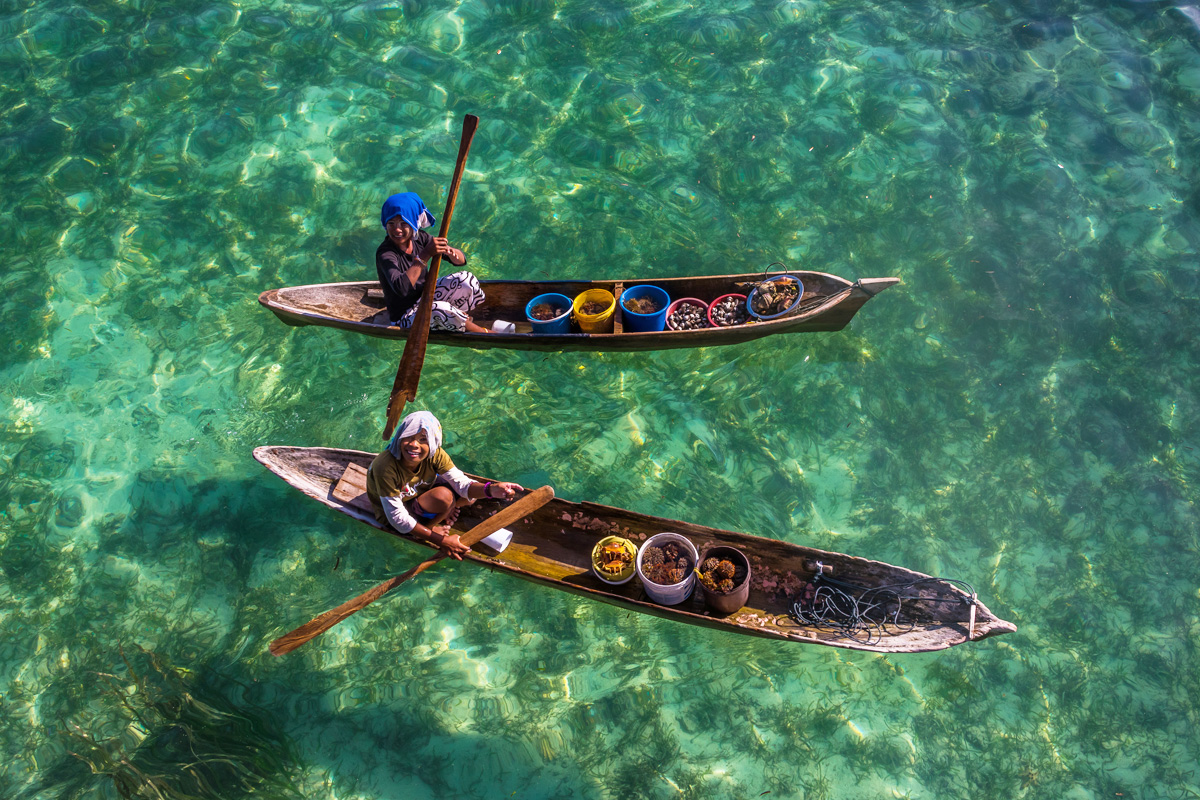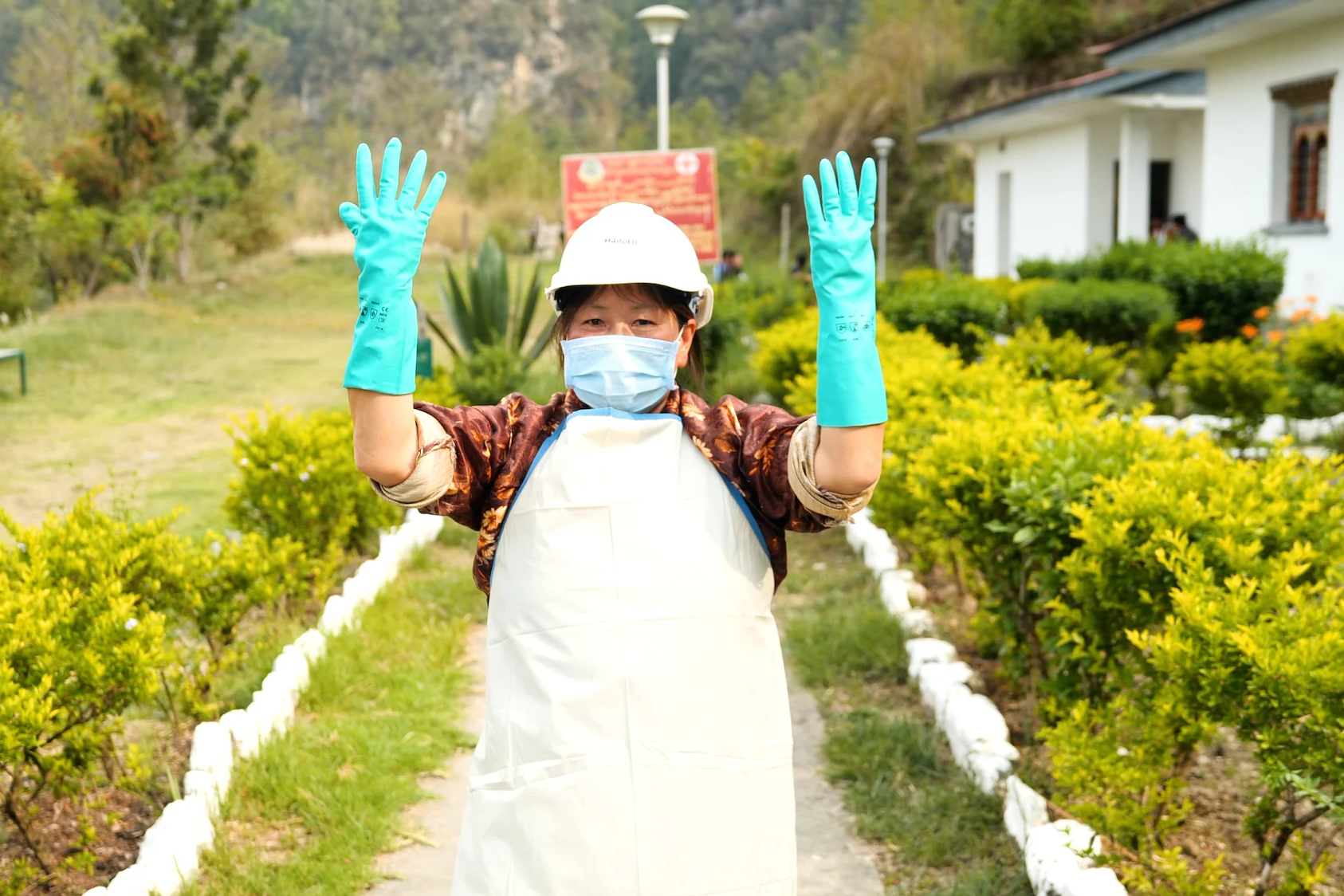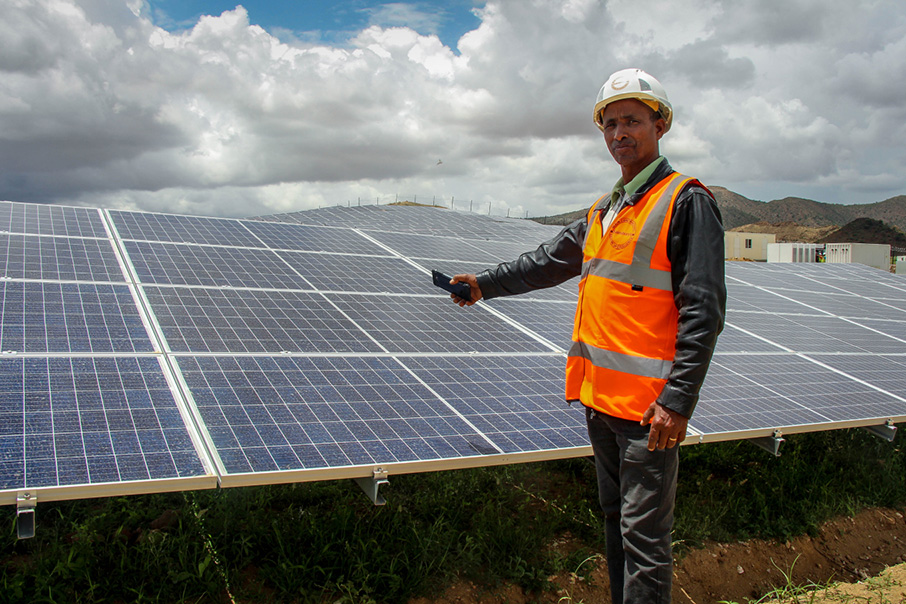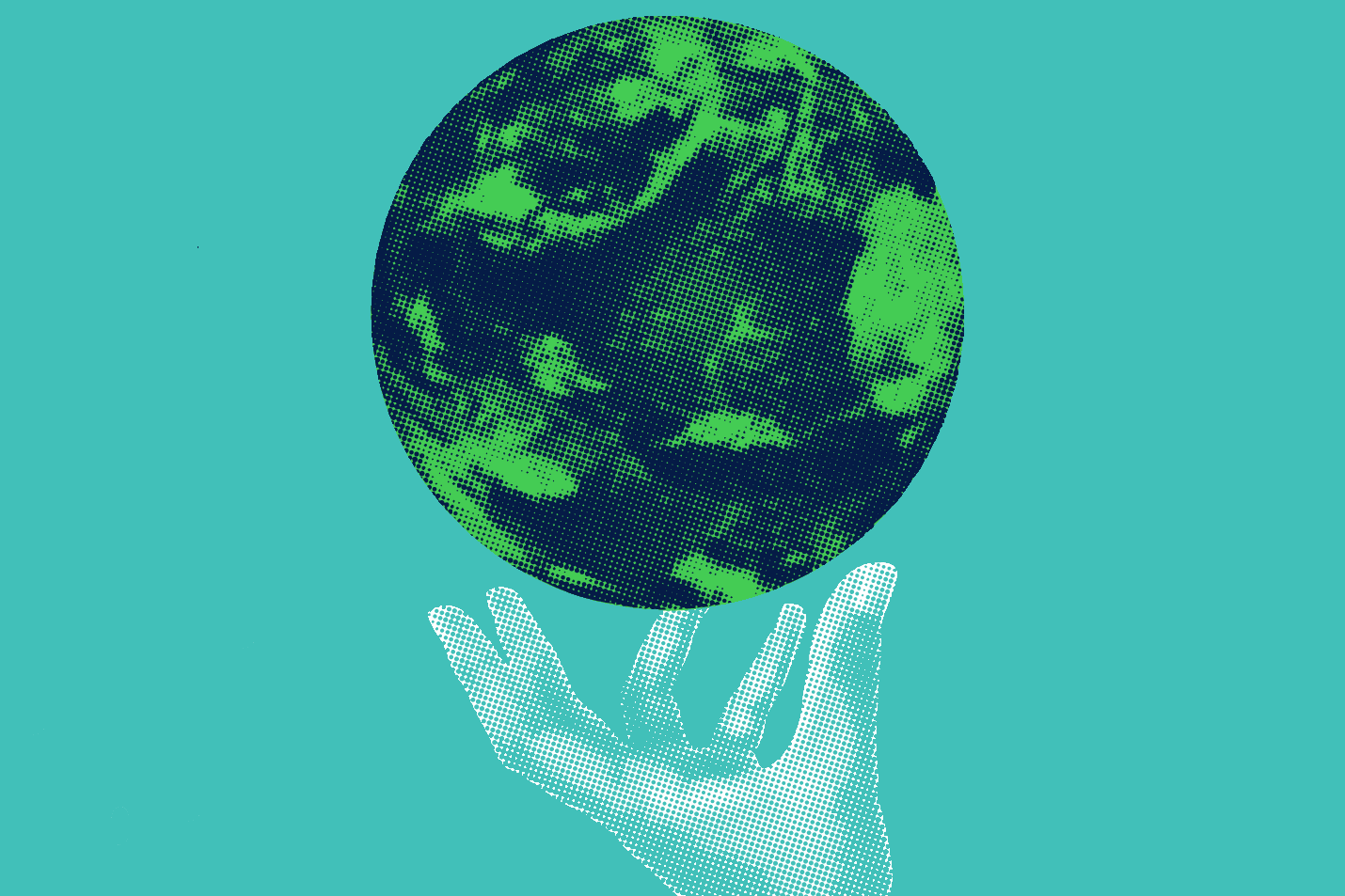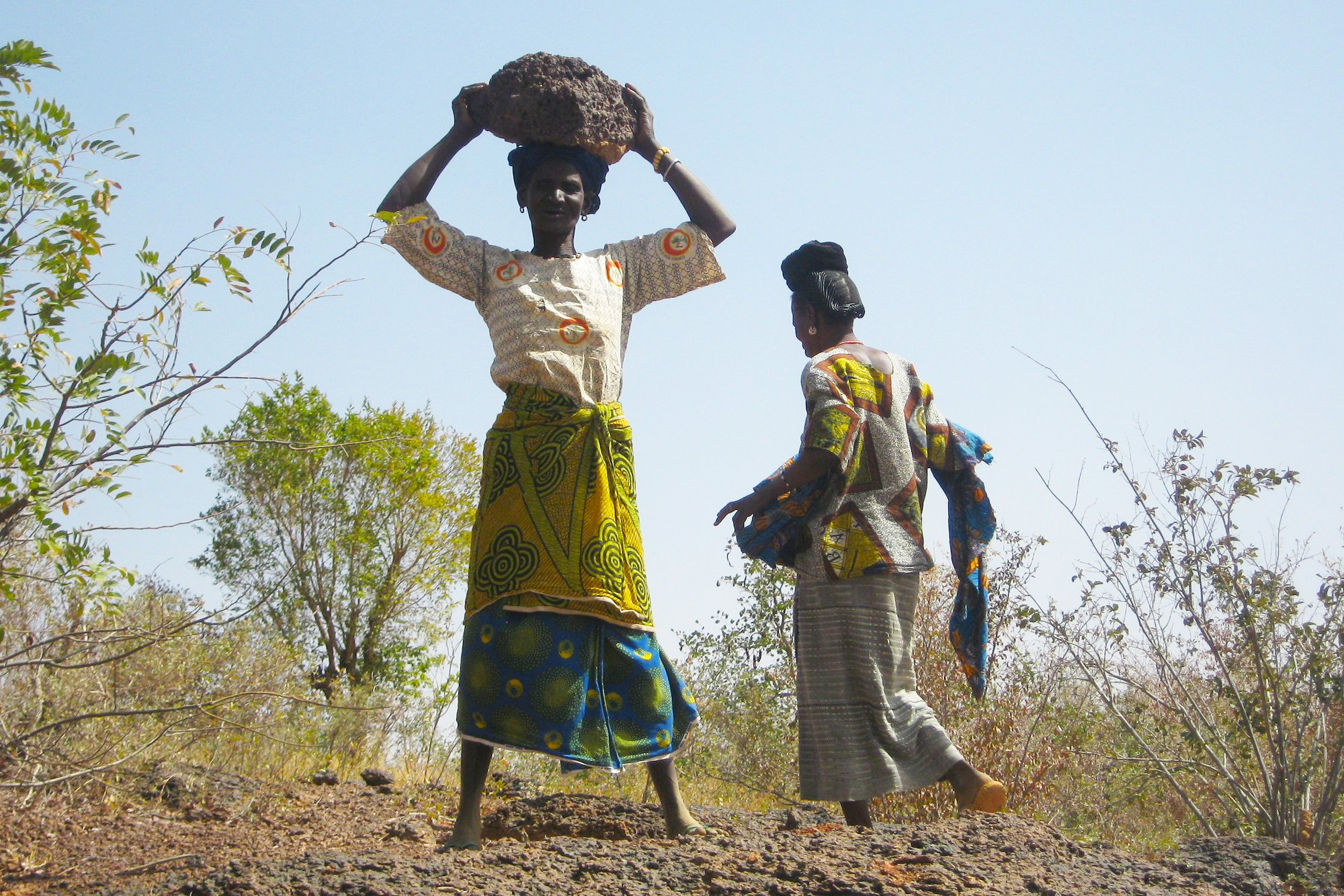The signs of conflict, distrust, economic inequality, and the climate crisis are all around us. A staggering 2 billion of the world’s 8 billion people live in conflict. For them, planning next week, let alone the more distant future is an unimaginable luxury. The recent Summit of the Future launched a conversation on how to create a better present while preserving choices for future generations. The United Nations Development Programme (UNDP) kicked off the debate with its latest Signals Spotlight report, which identifies areas where our legacy to future generations is in doubt.
UNDP
Mohammad’s Café has transformed into an oasis in the heart of the Diyala market thanks to a grant from the UNDP SME Grant Programme, which allowed him to fully renovate the café and equip it.
Two Bajau girls in Mabul island are seen selling their catch of mostly shellfish, lobster, snails, sea cucumbers and sea urchins. The Bajau Laut are a sea-faring group that traditionally lived across the Sulu Sea on small wooden boats called lepa, getting everything they needed from the ocean. Due to the creation of maritime borders that disregarded the distribution of ethnic groups, as well as other modern developments that clashed with their nomadic way of life, new generations of Bajau Laut have been forced to settle on land, not recognized as citizens by any country. The denial of citizenship means stateless people are often unable to access basic rights and services, such as state education, water, healthcare, and legal employment, leaving them at higher risk of exploitation, discrimination and abuse.
In 2023, a youth-led movement received a grant from the GEF Small Grants Programme, implemented by UNDP, to launch an environmental education project aimed at raising awareness and preparing students to address the various issues affecting their community.
As world leaders prepare to gather for the Summit of the Future, meet 10 young leaders who are leveraging digital solutions to create a secure future for all of us.
Wild tigers have a crucial place in Asian landscapes and biodiversity and act as both an umbrella and indicator species, protecting the wider ecosystem and indicating a healthy environment.
Over the past 12 years, tiger populations have begun to rise in 5 countries – increasing for the first time in over a century. With effective, collaborative conservation, evidence shows tiger numbers can recover.
As part of the solution, fighting for a future with tigers, the Tiger Conservation Coalition brings together leading biologists and experts in wildlife crime, human-wildlife coexistence, policy, finance, development and communications, with unprecedented alignment on achieving tiger conservation at scale. Its member organisations include IUCN, the Environmental Investigation Agency; Fauna & Flora; Natural State; Panthera; TRAFFIC; UNDP; the Wildlife Conservation Society; WWF and ZSL.
Climate change impacts are becoming more severe, with increasing droughts, floods, and extreme heat. We have a crucial two-year window to influence countries' third generation of Nationally Determined Contributions and keep global warming below 1.5°C.
The interconnectedness of healthcare waste management, climate change, and environmental degradation highlights the need for sustainable practices and technologies to protect both human health and the environment.
Starting in April, flash floods have wreaked havoc across Afghanistan, leaving at least 300 dead, hundreds injured, and nearly 9,000 homes destroyed. Thousands are now homeless. Roads, bridges, schools, and health facilities in Baghlan, Badakshan, Takhar, Faryab and Ghor are in ruins. But why are these sudden deluges so deadly, and what makes this disaster particularly devastating? On the surface, it might seem like a straightforward question, yet the answers unravel a complex weave of geography, climate change and socio-economic frailties, creating a polycrisis that’s hard to untangle. Here's what you need to know and how UNDP is trying to reduce its impact.
We are at a critical juncture in the climate crisis, and 2024 is a landmark year for democracy. These two historical milestones are not just coinciding; they are intertwined and essential to the shape of our future. In what’s being called a ‘super year’ for elections, half of the world’s adult population will have the chance to go to the polls, and climate action is one of the factors which affect how people vote. With a changing political landscape, 2024 could be a turning point to stabilize the climate and secure a livable planet for today and for generations to come.
This remote and unique region is grappling with a complex set of challenges that demand immediate attention. The recent unprecedented landslide in Enga Province, which affected close to 8,000 people, has not only highlighted the region's vulnerability to hazards but also exposed underlying issues such as conflict, poverty, inequality and the climate crisis. Geographically isolated, the region boasts rich cultural heritage, biodiversity, and natural resources. UNDP and its partners are undertaking a new programme focused on three interconnected pillars: community empowerment, climate resilience, and peacebuilding.
“How, in our age, do we overcome this competition between ecology and economy, which is leading us to so many destructive and ultimately, increasingly catastrophic realities around the world?”
Born in Brazil to German parents, Achim Steiner knows first hand the power of cultural exchange to drive international cooperation. Now head of UNDP, he leads global efforts to secure a better future for our planet and its people.
“The clearest lesson from 50 years of modern development thinking is don't try and just pick one aspect and put all your eggs in that basket. Society is complex, development is about choices. And you will either get them right and succeed or you will fall apart.”
In this episode, Achim reflects on the thorniest challenges facing humanity, on his hopes for a fairer, cleaner future, and on the vital lessons he learned in rural Pakistan.
Photo:©UNDP Afghanistan/Oriane Zerah
In the relentless march of climate change, the Earth is heating up faster than ever. The climate crisis unquestionably poses an existential threat to humankind. But it’s not too late to pull back from the precipice. We can still realize the promise of the Paris Agreement by taking urgent action, including reducing greenhouse gas (GHG) emissions by phasing out fossil fuels, protecting and restoring biodiversity and natural ecosystems and increasing resilience. Working hand in hand with nations around the globe, UNDP is spearheading efforts to translate intentions into actions.
The Peoples' Climate Vote 2024 asked if people want bolder climate action from their country.
Fast fashion contributes significantly to environmental degradation, including resource depletion, greenhouse gas emissions, and pollution.
Burkina Faso's economy relies on subsistence agriculture, mainly cereals like sorghum, millet, corn, and rice, but faces challenges with low crop productivity due to land degradation in the northern Sahelian zone. In 2018, residents of Kirsi established the Wendpanga Simplified Cooperative to address land degradation and desertification with support from the Global Environment Facility (GEF) Small Grants Programme (SGP) and the United Nations Development Programme (UNDP). The cooperative, consisting of 180 members, has already reclaimed 260 hectares of degraded land using techniques such as the zaï, stone barriers, and half-moons.



